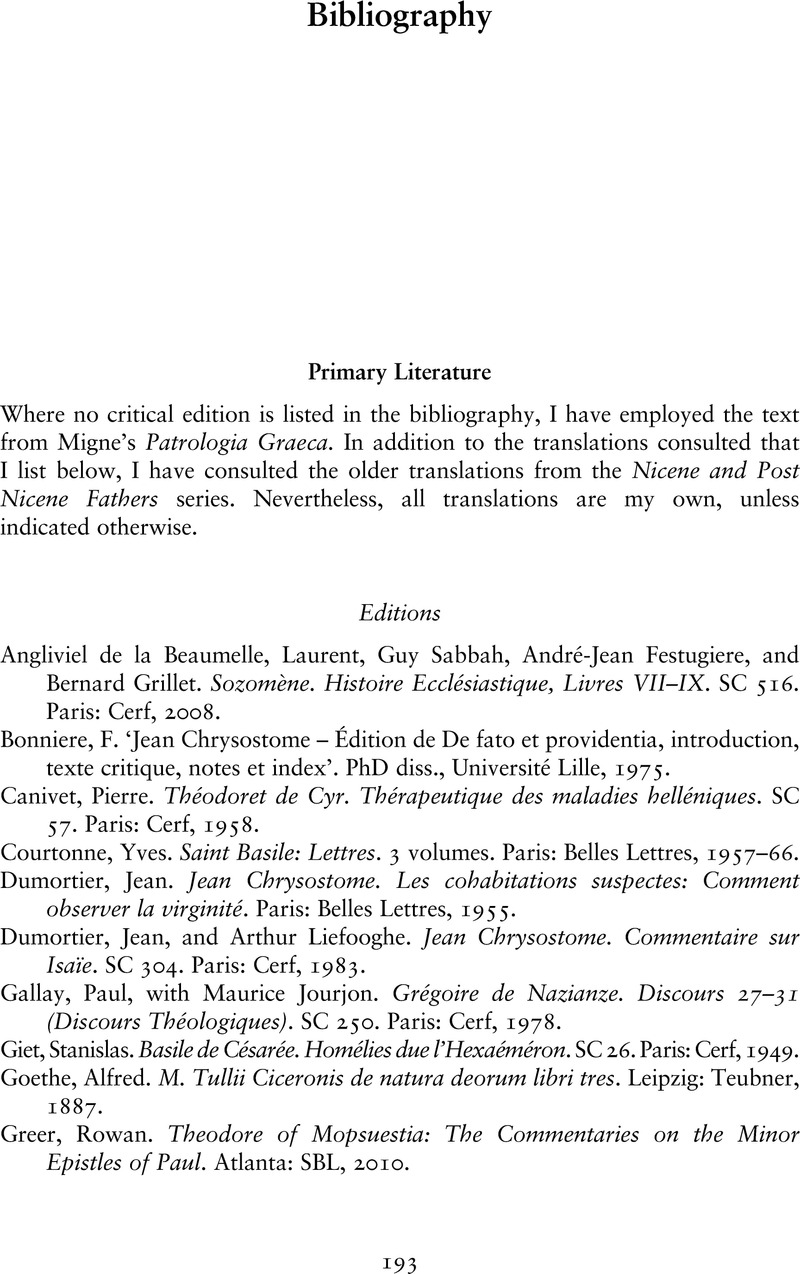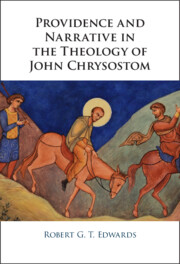Book contents
- Providence and Narrative in the Theology of John Chrysostom
- Providence and Narrative in the Theology of John Chrysostom
- Copyright page
- Dedication
- Epigraph
- Contents
- Preface
- Abbreviations
- 1 Stories of Suffering and Providence
- 2 Divine and Human Activity in Biblical Narrative
- 3 Narrative Clusters, Providential Habits, and Typological Exegesis
- 4 Proofs of Providence and God’s Philanthropic Character
- 5 True Judgements and Consolation
- 6 The Virtue of Yielding to Providence
- 7 Conclusion
- Bibliography
- Scriptural Index
- Subject Index
- References
Bibliography
Published online by Cambridge University Press: 01 December 2022
- Providence and Narrative in the Theology of John Chrysostom
- Providence and Narrative in the Theology of John Chrysostom
- Copyright page
- Dedication
- Epigraph
- Contents
- Preface
- Abbreviations
- 1 Stories of Suffering and Providence
- 2 Divine and Human Activity in Biblical Narrative
- 3 Narrative Clusters, Providential Habits, and Typological Exegesis
- 4 Proofs of Providence and God’s Philanthropic Character
- 5 True Judgements and Consolation
- 6 The Virtue of Yielding to Providence
- 7 Conclusion
- Bibliography
- Scriptural Index
- Subject Index
- References
Summary

- Type
- Chapter
- Information
- Providence and Narrative in the Theology of John Chrysostom , pp. 193 - 212Publisher: Cambridge University PressPrint publication year: 2022



